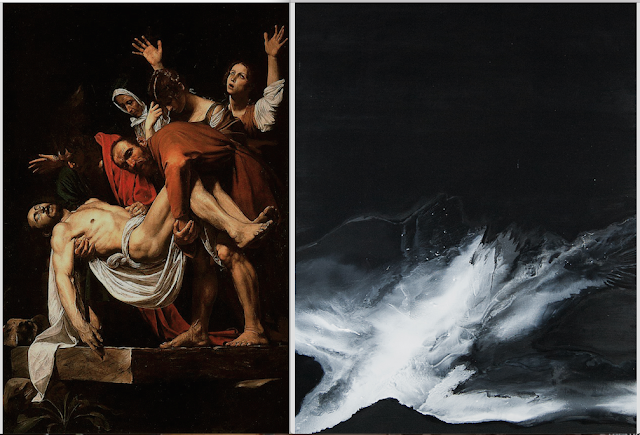I read the auction house reports this morning about certain painters whose work sold for $50K and up only a year or so after their initial shows on the LES and now the prices have plummeted back to original "value." Much pontificating and speculation and this and thus, yet (unsurprisingly) little substance. Far fewer reasons to care.
Beware of the anointment of marketability. It comes with strings held by people who are not artists, who may, in fact, not particularly like art at all other than as a commodity on which to speculate.
It's easy to bemoan the corruption and greed of the Art World, yet consolidation of power when money is on the line should come as no surprise. Notoriety is largely a trap which ushers in creative decline, and fame comes in the form of chains. A fellow painter, more successful than I at the time and arguably still, once told me to cherish obscurity and its freedom as long as it lasted. To create when no one is watching is the purist form of expression in many ways, though it won't get you a career.
No, at some point one decides to do this thing called art professionally and the compromises begin. I have always explored the themes of dissolution and decline of Empire, so a Trump presidency certainly gives me more source material, but it also bestows (quite in spite of itself I imagine) a relevance to my work that may have been lacking in the anti-painting climate of the past decade. Does the work change or does the perception of the work change? What, exactly, is the difference? These manifestations of medium on surface are imbued with a visual ambivalence. Indeed, this is my preferred state in the studio; detachment.
I am planning the spring campaign. The Art world seems very distant, yet it hums in the shadows of the studio, wanting to edit, detract, influence and interfere. A large space in a small place, itself in a small corner of a vast land.
I see the exercise of creativity as an open act of sedition. The practice of art is not, in itself, motivated by market forces and therefore challenges the relevance of the capitalist enterprise. It is not coincidence that in dictatorships the artists and teachers are rounded up and imprisoned first. Take away the voice, take away the ability to develop the mind and question, and power is solidified. So while capitalism constantly seeks to marginalize the arts, sometimes through dismissive rhetoric, sometimes through institutional
good will, being an artist is not now, nor has it ever especially been a respectable profession, if even considered a profession at all. This is, admittedly, disheartening at times until one considers the fact that being labeled a deviant is a tangible sign of true creativity. To deviate is the artist's only true path; adherence leaves them at the mercy of Christie's and rest of the money changers. To risk being ignored, to risk being cast out, if done in the service to one's art form, this is virtue.
And I realize, in the Art world, I am the change I wish to see.










